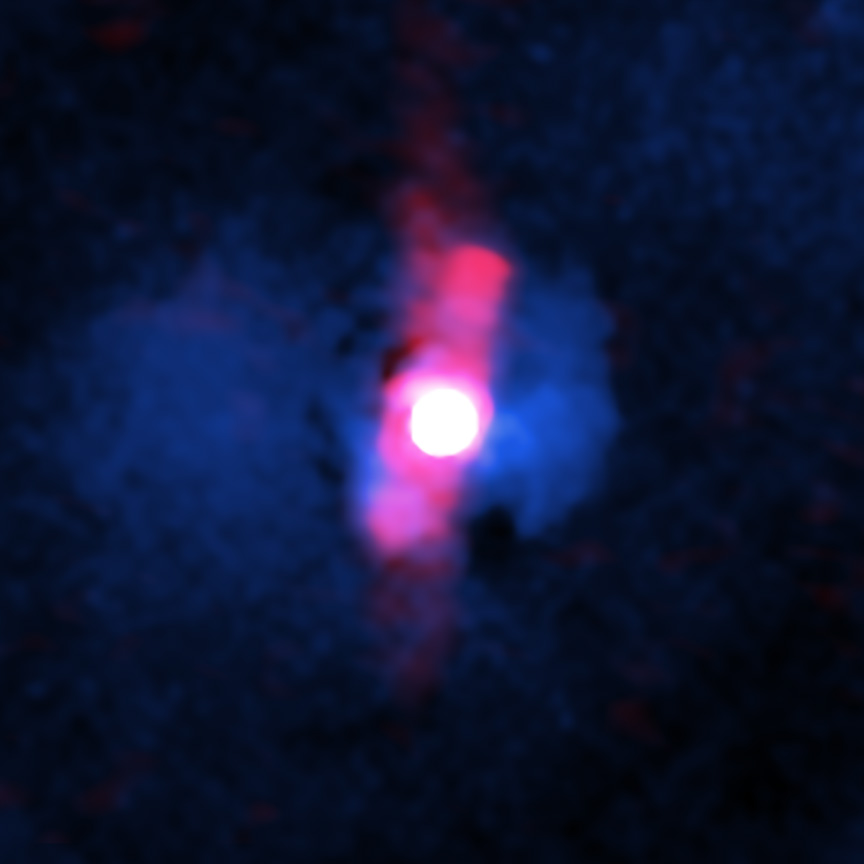This supermassive black hole is not living up to expectations

Astronomers have found a rapidly growing supermassive black hole (quasar) not achieving what they expect from it. Known as H1821+643, this quasar is about 3.4 billion light-years from Earth - the closest quasar to Earth in a cluster of galaxies.
Using NASA's Chandra X-ray Observatory and the Very Large Array (VLA), researchers found that H1821+643 was less influential than many giant black holes in other clusters.
The team studied hot gas enveloping H1821+643 and its host galaxy using data from NASA's Chandra. Initially, the quasar's intense X-ray emissions posed a challenge, masking the weaker X-rays emanating from the hot gas. After meticulously removing the X-ray glare, the researchers were able to see that the quasar was actually having little effect on its surroundings.
The analysis revealed a significantly higher density of gas near the black hole at the galaxy's center, with considerably lower gas temperatures than those in more distant regions.
Scientists anticipate this behavior of the hot gas in situations where there is minimal or no energy input (usually from black hole outbursts) to hinder the cooling and inward flow of the hot gas towards the cluster's core.
Scientists using Chandra have identified a brilliant supermassive black hole that's not living up to expectations. Located about 3.4 billion light-years from Earth, H1821+643 is having much less of an impact on its surroundings than expected. More: https://t.co/TDNCmMfaDe pic.twitter.com/4tWl8iACL9
— Chandra Observatory (@chandraxray) March 21, 2024
- READ MORE ON:
- black hole
- quasars
- black hole H1821+643










